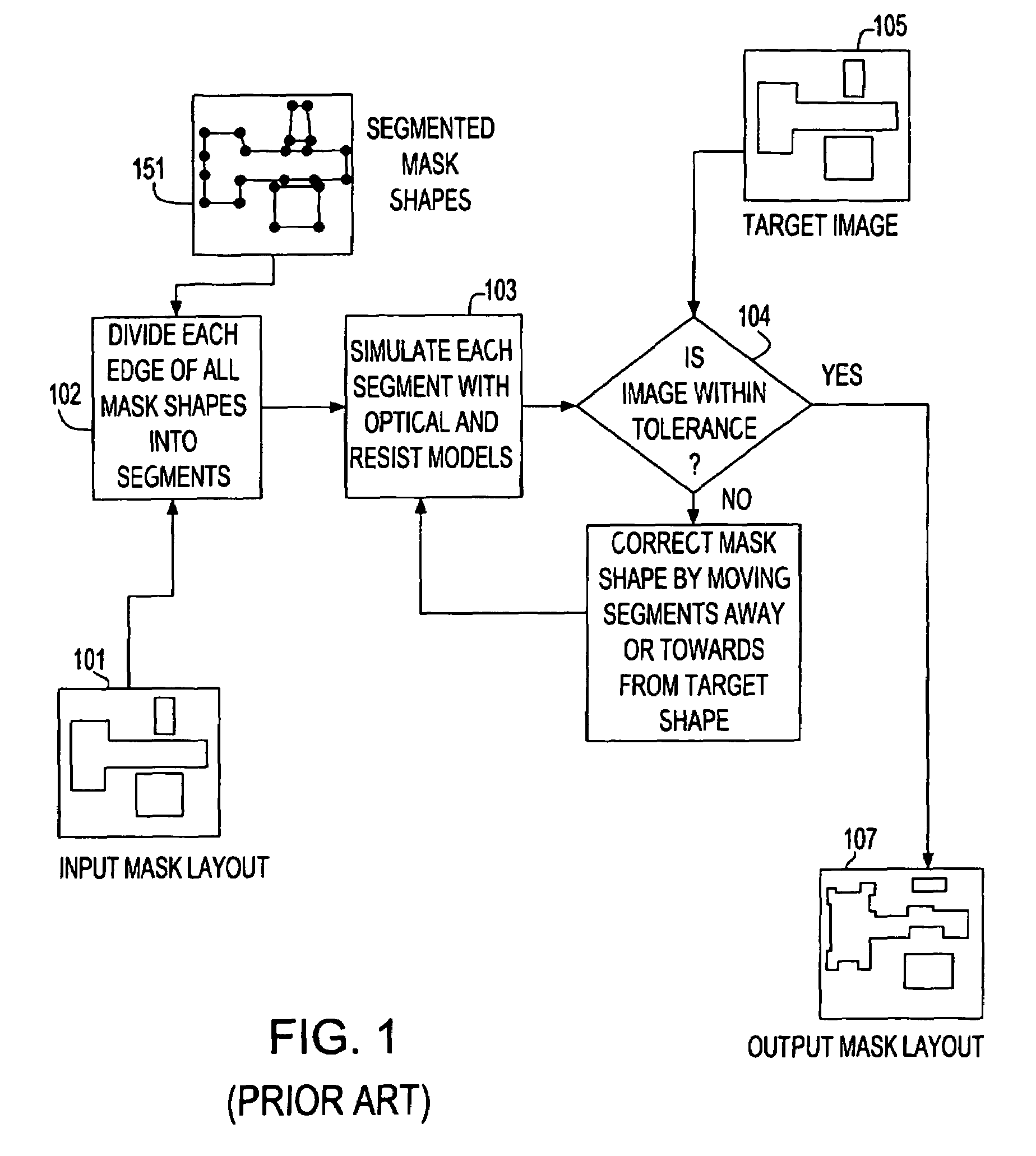Fast and accurate optical proximity correction engine for incorporating long range flare effects
a long-range flare and optical proximity technology, applied in the field of optical lithography, can solve the problems of limiting the accuracy of predictions, complex opc methodologies, and high computational intensity of all models, and achieve the effect of reasonable accuracy and reduced tim
- Summary
- Abstract
- Description
- Claims
- Application Information
AI Technical Summary
Benefits of technology
Problems solved by technology
Method used
Image
Examples
Embodiment Construction
[0064]In describing the preferred embodiment of the present invention, reference will be made herein to FIGS. 6–8, in which like numerals refer to like features of the invention.
[0065]The present invention is ultimately used in optical lithography to correct for any distortions on a photo-mask having circuit patterns, in order to achieve an accurate projection thereof on the photo-resist coated wafers. In so doing, the invention provides model-based optical lithography simulations that incorporate long-range flare and stray-light effects when simulating a wafer image.
[0066]The present invention provide a significant improvement beyond the prior art, as illustrated in FIG. 2, for the computation of the image intensity at a point. In order to compute this image intensity, the invention considers the effect of flare emanating from all the shapes on the mask as opposed to a small region considered in the prior art.
[0067]Whereas the prior art shown in FIG. 2 considers only short range in...
PUM
| Property | Measurement | Unit |
|---|---|---|
| reflectivity | aaaaa | aaaaa |
| distance | aaaaa | aaaaa |
| distance | aaaaa | aaaaa |
Abstract
Description
Claims
Application Information
 Login to View More
Login to View More - R&D
- Intellectual Property
- Life Sciences
- Materials
- Tech Scout
- Unparalleled Data Quality
- Higher Quality Content
- 60% Fewer Hallucinations
Browse by: Latest US Patents, China's latest patents, Technical Efficacy Thesaurus, Application Domain, Technology Topic, Popular Technical Reports.
© 2025 PatSnap. All rights reserved.Legal|Privacy policy|Modern Slavery Act Transparency Statement|Sitemap|About US| Contact US: help@patsnap.com



